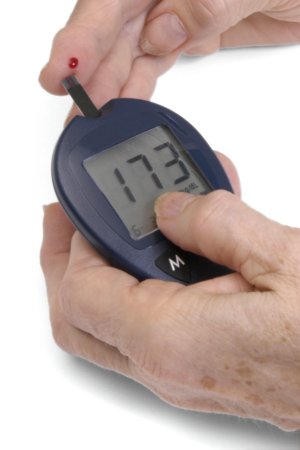May 19 2010
Scientists are reporting development and successful testing of a sensor that can instantly tell whether someone has Type I diabetes. It could also be used by emergency room doctors to determine whether a patient has developed diabetic ketoacidosis, a potentially serious complication that happens when diabetics do not take enough insulin.
Someday the technology may also be used by diabetics, in their own homes, to determine whether they need more insulin. A report on the sensor appears in ACS' Analytical Chemistry, a semi-monthly journal: "Si:WO3 Sensors for Highly Selective Detection of Acetone for Easy Diagnosis of Diabetes by Breath Analysis”.
 Finger pricks, now used to
help monitor blood glucose
levels in patients with diabetes,
could be replaced by an
easy-to-use breath test.
Credit: iStock
Finger pricks, now used to
help monitor blood glucose
levels in patients with diabetes,
could be replaced by an
easy-to-use breath test.
Credit: iStock
Professor Sotiris E. Pratsinis and colleagues at ETH Zurich in Switzerland explain that everyone has a little bit of acetone in their breath. But people with Type I diabetes release unusually high levels of the chemical when they exhale. If they have diabetic ketoacidosis, a dangerous buildup of acetone in the blood, they exhale even-larger amounts of acetone.
Pratsinis' team built an extremely sensitive acetone detector by directly depositing from a flame plume a thin film of semiconducting, mixed ceramic nanoparticles between a set of gold electrodes. The device acts like an electrical resistor. When it gets hit with a puff of acetone-filled air, its resistance drops, allowing more electricity to pass between the electrodes. If a diabetic were to breathe on the sensor, its resistance would suddenly drop. When a healthy person exhales onto the nanoparticles, their resistance will not change very much. Pratsinis' team found this new sensor can detect acetone in extremely moist air, an attribute that is critical for any breath test. It is sensitive enough to detect acetone at 20 parts per billion, a concentration that is 90 times lower than the level at which it can be found in the breath of diabetic patients.